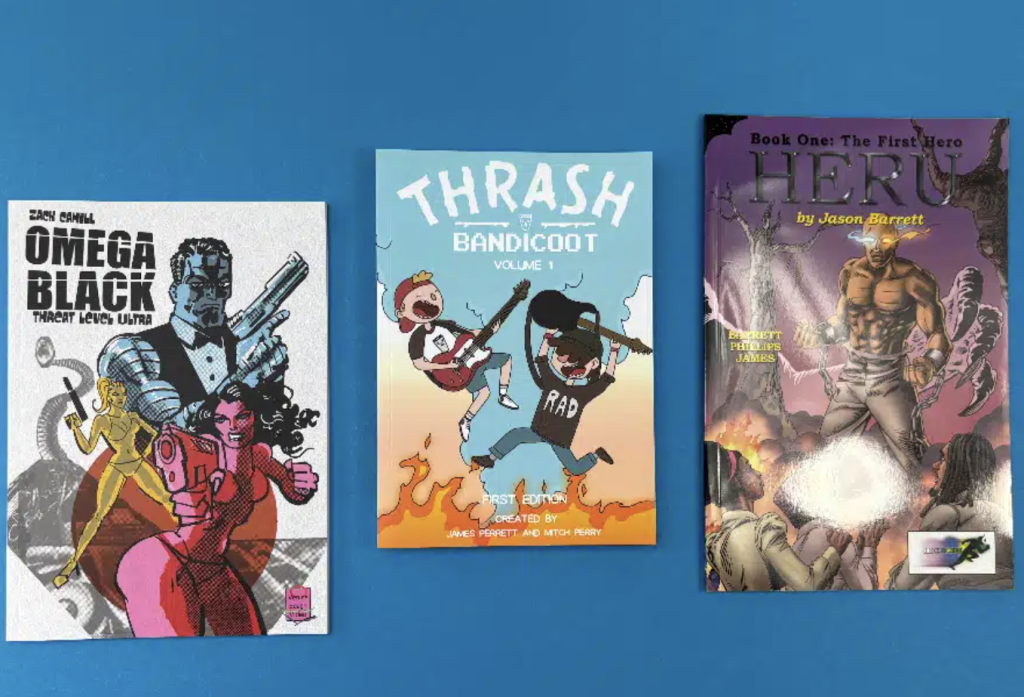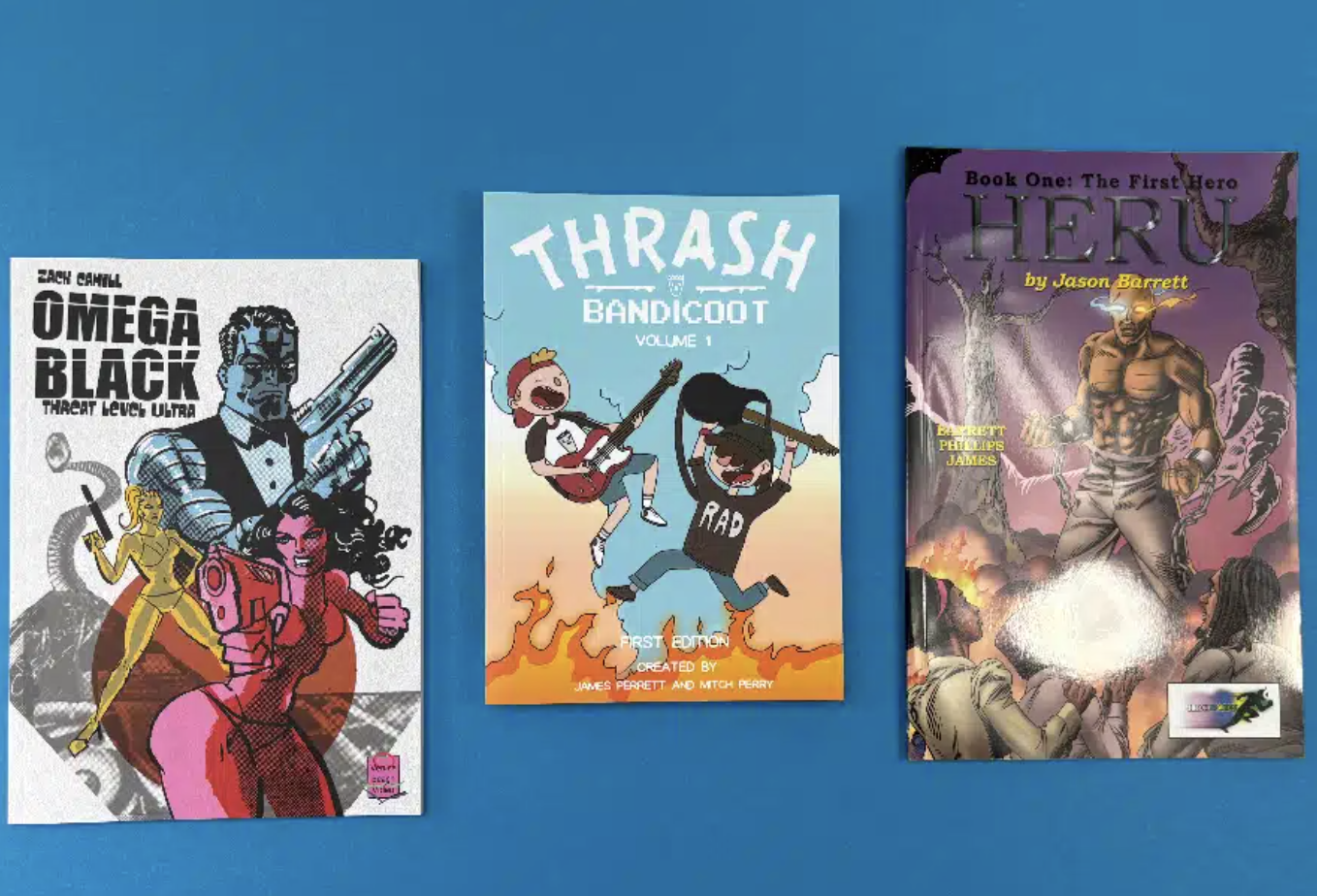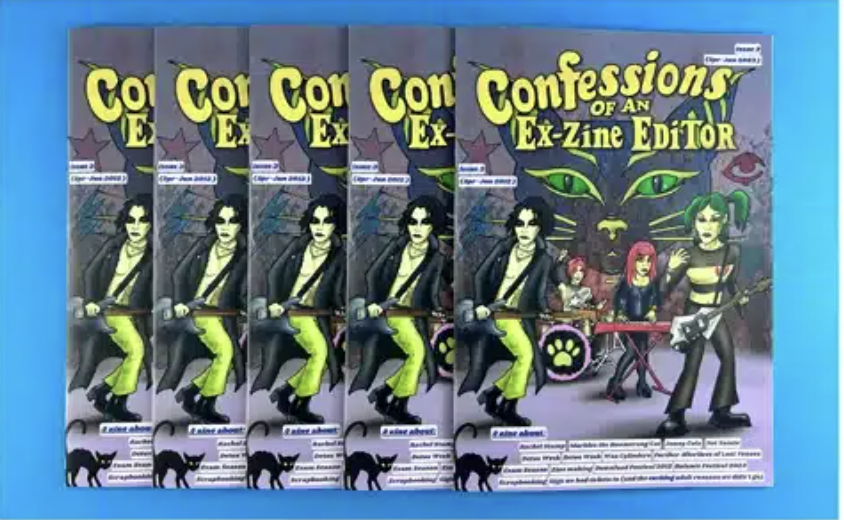How Much Does it Cost to Print a Comic Book? A Breakdown



Have you ever wondered how much does it cost to print a comic book?
For many creatives, the thrill of bringing a comic book to life—from concept to printed copy—is unmatched. With digital tools and printing platforms more accessible than ever, transforming your vivid characters and gripping narratives into physical pages is no longer just a dream. Whether working in Adobe Photoshop, sketching on uncoated paper, or uploading individual files to an online platform, self-publishing your comic book has become a realistic and rewarding venture.
But as exciting as it sounds, one critical question stands between you and that first printed copy: How much will it cost? Every decision affects your budget, from your initial quote to your chosen file formats, binding style—be it saddle stitch binding or hardcover items—and details like low paperweights, interior pages, or a detachable outer cover.
Let’s break it all down so you can turn your passion into print as soon as possible, with clarity on both creative choices and costs.
How Much Does It Cost to Print a Comic Book?

Creating your own comic book art can be as affordable—or as premium—as your vision and tools allow. Whether sketching on paper or designing in a graphic design program like Adobe Photoshop, your chosen path impacts your cost, workflow, and even final print results. Let’s explore the three major routes: traditional, digital, and hybrid.
1. Traditional Art Supplies:
If you enjoy the tactile nature of pencil on uncoated paper or the inky finish of a brush stroke, traditional tools might be your go-to. A basic setup typically includes:
- Pencils and pens
- Brushes and ink
- Various paper types for your interior pages
- A drawing board or even a professional drafting table
While you can start small for $150–$200, a premium drafting table setup can exceed $1000. Remember, this approach may require scanning individual files, fixing ink transferral issues, and formatting them into the correct file types like a high-resolution CMYK color mode DPI PDF file—especially before using tools like Mixam’s automatic file checker during production.
2. Digital Art Supplies:
Going digital removes the clutter—and sometimes the mess. You’ll mainly need:
- A tablet or computer
- A free Mixam account
- Software like Adobe Photoshop
- Pre-built downloadable PDF templates to align your cover spread, inside front cover, and interior pages correctly
Though the initial quote for hardware/software can run high, it’s more scalable for creators handling large offset print runs or uploading individual files for saddle stitch binding, hardcover book orders, or even detachable outer covers. Digital art also allows for online previews, downloadable proofs, and instant re-edits—ideal for creators with high page counts or those seeking a quick estimated date for delivery.
3. Hybrid Method:
Many modern artists blend the best of both worlds. They start with pencil sketches on single pages, then digitize and refine them in Photoshop. This method requires a good scanner and may involve correcting hinge area spacing, extending artwork to avoid blank page errors, and carefully managing your finished trim size.
Using Mixam's file setup support page and finishes support page ensures your front cover design, inside back cover, and inner pages all end up in the correct place.
Scanning and Preparing Artwork
If you’re working with traditional artwork, one crucial step before printing is digitizing your content. Since printers require high-resolution dpi PDF files and specific file formats, your physical illustrations must be converted into digital versions. This is a key consideration when figuring out how much does it cost to print a comic book, especially if you're producing individual files for single pages or double pages.
Professional scanning services typically charge between $60 and $250 per page, depending on quality and turnaround. For creators planning frequent or larger orders, investing in a graphic design program and a high-end reproduction scanner—ranging from $3,000 to $5,000—can be a smarter, long-term solution.
Beyond scanning, you’ll also need to prepare your files to match the printer’s technical specifications. This includes accurate finished trim size, correct CMYK color mode, clean extension of artwork into the hinge area, and ensuring each blank page, interior page, and inside front cover is aligned properly. Tools like Mixam’s automatic file checker, their file setup support page, and downloadable PDF templates can help you avoid costly revisions and ensure your artwork is in the correct place.
Proper preparation not only guarantees a smoother printing process but also enhances your comic’s final appearance, whether you're printing on uncoated paper, choosing low paperweights for low page counts, or selecting finishes like saddle stitch binding, hardcover items, or even a dust jacket. Ensuring that your files are print-ready at the earliest opportunity can significantly reduce the estimated date for delivery and keep your initial quote within budget.
If you’re printing with Ex Why Zed, the process is straightforward. We only need three things to get started:
1️⃣ Your print-ready artwork (as a high-res PDF),
2️⃣ Your print preferences (binding, size, finishes), and
3️⃣ A delivery address.
Just send your files via WeTransfer, and our expert team will do a full check before printing—no worries if it's your first time. Our quick guides on bleed, file size, and double-page spreads make it easy to get everything right the first time. You can explore the Ex Why Zed Print Journey for step-by-step help and ensure your files are in perfect shape before hitting print.
The Printing Process
After the creation stage is complete, you will set the wheels of the printing process in motion. This stage involves making some crucial choices—the comic book sizes you want to offer, whether you opt for color or black-and-white prints, and the quality of paper fit for your purpose. Each decision impacts costs differently, with scenarios often balanced between what you'd like to offer and what is financially viable. Understanding these variables thoroughly will allow you to navigate this phase efficiently.
Comic Book Sizes
The size of your comic book plays a subtle yet significant role in how readers perceive and engage with your story. Although you are free to experiment with unusual-size formats, it's generally safer and more cost-effective to adhere to standard sizes. This is not just about binding expenses but also about matching the expectations of your readership. The most popular comic book size is 6.7" x 10.2", though sizes can range up to 8.5" x 11.5". Larger sizes involve increased printing costs, and custom sizes might incur additional charges.
Here’s a straightforward breakdown of standard comic book sizes:
|
Standard Size |
Dimensions |
|---|---|
|
Pocket Book |
4.25" x 6.87" |
|
Golden Age |
7.38" x 10.25" |
|
US Trade |
6" x 9" |
|
US Standard |
6.69" x 10.24" |
Color vs. Black-and-White
Another significant factor in determining costs is your decision between printing in color or black-and-white. Printing in full color involves higher costs but is usually preferred for graphic stories that draw significantly on visually vivid storytelling. Many globally acclaimed comics, however, are successfully published with black-and-white interiors. Some even combine both, opting for colorful covers with black-and-white interiors or including selective color pages within a largely black-and-white interior. Considering styles, target demographics, and budget constraints can help you make an informed decision on this vital aspect of the printing process.
Paper Types and Quality
Choosing the right paper stock plays a crucial role in determining how much does it cost to print a comic book. It's more than just aesthetics—it affects the comic's durability, color vibrancy, and overall reading experience. From internal pages to the inside front cover, the right choice ensures your art shines and printing costs stay in check. Here’s a breakdown of some popular options:
- 70 gsm / 50 lb Offset Paper: A lightweight and budget-friendly option, this is best for black-and-white interior pages and low page counts. However, it may lead to ink transferral if used for colored inner pages. It suits smaller runs or minimalist styles with minimal details.
- 120 gsm / 80 lb Stock: Ideal for colored interior pages, this medium-weight stock enhances ink saturation and detail. It works well with graphic design programs like Adobe Photoshop, especially when paired with high-resolution dpi PDF files.
- Bristol Board or Layout Bond: This option is preferred for original artwork and sketches. It has smooth and vellum finishes that offer excellent ink transferral and precision. Though often used in original work, it can inform your digital file prep when preparing individual files or scanning for upload using Mixam’s automatic file checker.
- Uncoated Paper & Recycled Stocks: Eco-conscious choices that offer texture and a natural finish. These are perfect for comics that favor a raw, gritty aesthetic. Ideal for those looking for sustainable hardcover items or detachable outer covers with an organic look.
Binding Options for Comics
The binding of your comic book significantly affects its durability, aesthetic appeal, and production cost. From saddle stitching suitable for smaller books to various forms of perfect binding ideal for larger comics, the options are myriad. Other binding styles such as Wire-O, Spiral, Adhesive Casebound, and Smyth Sewn add unique touches to your comic book, enhancing its visual appeal while ensuring it stays intact over time. Understanding different binding methods and their impact on your budget will help you choose the best option for your comic book.
1. Staple Binding
Staple binding, or saddle stitching, is a cost-effective method and common among comic books with a lower page count. This process involves folding pages in sheets, stacking them, and securing them with metal staples through the "spine". Staple binding renders a lightweight, flexible finish and is an economical alternative to other binding methods. However, since the pages are stacked inside each other in multiples of four, this binding style works best for shorter books (typically under 92 pages). It might not be the best choice for larger, thicker works that require more durable binding.
2. Perfect Binding
Perfect binding, often seen in paperback books, involves gluing the cut pages into a block that is then attached to the spine and separate heavier paper covers. This lends the comic book a sturdy, smooth spine where you can print the title and author’s name, making it great for display. While costing slightly more than saddle stitching, perfect binding accommodates more pages (up to hundreds) and offers a professional finish that’s excellent for long-term usage.
3. Wire-O Binding
Wire-O binding, also known as twin-loop or double-loop binding, is a method where holes are punched on the side of the pages, and a wire spine is threaded through. This style allows the comic book to lay flat when open, providing an uninterrupted view of the artwork across both pages. Although not very common for comics, Wire-O binding can give your product an unconventional edge, setting it apart from traditional comics in the market.
4. Spiral Binding
Spiral binding involves looping a plastic coil through holes on the side of the pages. It offers durability and the significant advantage of allowing the comic book to lie completely flat. This is particularly beneficial when a graphic narrative extends from one page to the next, ensuring the continuity of the artwork isn’t disrupted at the centerfold. However, much like Wire-O binding, it is less commonly used for traditional comic books.
5. Adhesive Casebound Binding
Adhesive casebound binding involves attaching an outer hard casing to the assembled pages using a robust adhesive. This type of binding gives your book a rigid and high-quality feel reminiscent of a classic hardbound novel. While more expensive than other types of binding, casebound binding certainly adds a premium touch to your comic book. It's suitable if you're focusing on crafting collector’s editions or luxury editions or if the graphic novel format is preferable.
Comic Book Printing Cost
When it comes to answering how much does it cost to print a comic book, several factors come into play—from design and material choices to binding style and promotional planning. Let’s break it down for clarity and smarter budgeting.
1. Self-Publishing & Promotional Costs
Beyond just printing, self-publishing your comic means you must promote and distribute it effectively. While you can utilize free online tools like social media or create a website using basic platforms, impactful marketing often comes with a price tag. You may need professionally designed flat items, banner ads, printed posters, or even booths at comic conventions.
According to industry standards, budgeting around $500 to $1,000 for your initial promotional push is a smart starting point. This may cover:
- Digital ads
- Basic website hosting
- Social media boosts
- Printed promo materials
- Small event participation
Keep an eye on your new estimated delivery date when scheduling promotions—timing is everything that maximizes impact.
Planning to launch your comic on social media? ExWhyZed doesn’t just print your books—they help you think beyond the press. From pre-launch teasers to final product shots, their social media launch guide gives you smart, actionable tips to build hype and drive orders.
2. Comic Book Creation Start-Up Costs
If you’re starting from scratch, the start-up costs to create a comic book can range from $1,000 to $5,000. These estimates cover:
- Artist supplies (digital tablets or traditional materials)
- Graphic design programs like Adobe Photoshop
- Scanning artwork or creating dpi PDF files
- Initial perfect bound print run of 100 copies
These numbers are based on a standard 48-page, full-color comic book. If you're planning high page counts, heavy paper stocks, or complex layouts, costs will rise. Ensure your files meet the printer’s specifications to avoid delays—Mixam’s support page and file setup guide are your best allies here.
3. Comic Book Printing Cost Overview
Here’s a general cost breakdown for a standard 6.7" x 10.2" perfect-bound comic book. These estimates use 105 gsm (70 lb) paper for interior pages and a gloss-laminated 200 gsm (80 lb) cover and assume an order of 100 copies.
Prices do not include shipping.
|
Quantity of Comics |
40 Pages |
44 Pages |
48 Pages |
56 Pages |
64 Pages |
|---|---|---|---|---|---|
|
100 pcs |
$373 |
$425 |
$418 |
$472 |
$516 |
|
200 pcs |
$440 |
$499 |
$492 |
$557 |
$609 |
|
500 pcs |
$513 |
$579 |
$576 |
$653 |
$715 |
|
1000 pcs |
$630 |
$711 |
$706 |
$817 |
$892 |
|
2000 pcs |
$918 |
$1023 |
$1043 |
$1196 |
$1321 |
These values are only indicative, and actual costs may vary. You should get a personalized quote for your specific comic book project.
Need Help Bringing Your Comic to Life? Ex Why Zed Will Help!
At Ex Why Zed, we specialize in high-quality comic book printing tailored to independent creators. Whether you're printing a short run for a convention or launching a full-color graphic novel, we offer stunning results, fast turnarounds, and expert support every step of the way. Choose from saddle-stitched, perfect bound, or hardcover options—all at competitive prices. Let Ex Why Zed help you turn your story into a printed masterpiece. Get a free quote today!
Conclusion
From crafting compelling characters to choosing the perfect layout and paper, every detail reflects your artistic vision. But to truly bring that vision to life, it's essential to understand how much does it cost to print a comic book.
From selecting perfect bound formats and heavy paper stocks to preparing your inside covers and ensuring your files are in the correct format, every step impacts your final cost. Utilizing tools like Mixam’s instant quote calculator, support page, and delivery support page helps you stay on top of deadlines and avoid unexpected issues. Whether planning for a new estimated delivery date, fine-tuning flat items, or ensuring your content fits the bottom of your spine, being financially and technically prepared can make all the difference.
With a clear grasp of the printing and publishing process—and leveraging resources like free quotes, file checkers, and setup guides—you can stay within budget while maintaining complete creative control. Knowing the true cost not only protects your investment but also empowers you to tell your story with confidence, quality, and impact.
Frequently Asked Questions
How much does it cost to produce a comic book?
The cost of producing a comic book varies drastically based on individual project specifications—including the method of comic creation, whether traditional or digital, the size and number of pages, color usage, paper selection, and binding style. On average, you might have to invest anywhere between $1,000 to $5,000 to create and print a 48-page, perfect-bound, color-printed comic book.
How much does it cost to print a 300-page book?
The cost to print a 300-page book can significantly vary based on specific project requirements, such as paper type and weight, color or black-and-white printing, and binding method. As every project is unique, it is recommended that you get a custom quotation through an online print cost calculator for the most precise estimate.
How much should a comic artist charge per page?
Charges per page for comic artists can fluctuate greatly, influenced by factors such as the complexity of the artwork, color vs. black-and-white, and the artist's experience level. However, on average, they can range anywhere from $100 to $300 per page. Some established artists may charge considerably more based on their reputation and demand.
Does Image Comics pay for printing?
Image Comics operates under a creator-owned model. Hence, creators are responsible for covering their own production costs (including printing) for their comic books. Profits from the comics' sales are split between the creators and Image Comics, with the majority share going to the creators.

